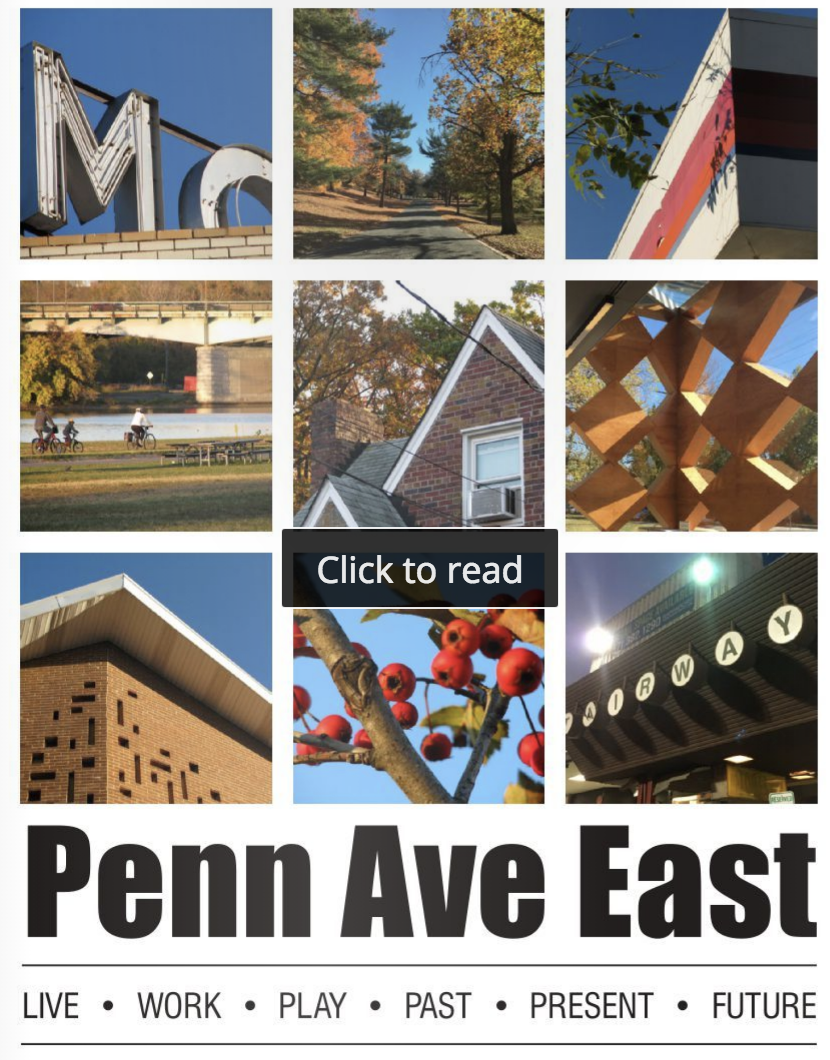
About CityLab:
CityLab is an active learning collaborative experience and an opportunity to give back to the communities we live in. As collaborators, we use various methods of discovery, inquiry, and analysis and in the process, develop a deep understanding of urban livability challenges in the Washington DC metro area. This is an effort to work on revitalization projects that can transform urban livability challenges into opportunities for shared value creation. CityLabDC has focused on projects in neighborhoods across the city -- most recently in Wards 5 and 7 -- working with residents to encourage community engagement in consultation with the Penn Branch Economic Development Committee.
My Role:
Consulting | Strategy | Research | Engagement leadership | Facilitation | Design | Execution
Goals:
1 Urban immersion
Urban immersion is a process of discovery based on experiential understanding of a neighborhood, its people, and it's places. The process of discovery based on experiential understanding of a neighborhood, its people, and its places are important to this piece of the practicum - We started off with a kick off meeting with the PENAVEEDC committee members and Steven Downing who heads the committee took us around the neighborhood and gave us some insight into what are the possibilities in the area. Through this immersive session we were able to understand and learn what the neighborhood is all about who are all the people who make this neighborhood, brief history and the possible improvements we could all help to make an impact in the community and be part of this change. This tour set the base of our future conversations to take up specific projects in the area.
2 Domain knowledge integration
It is a practice of exploring, interpreting, and synthesizing key elements of urban livability. This was truly our exploration phase. Our domain knowledge integration was primarily based on how we explored, interpreted, and synthesized key elements of the neighborhood of PennAveEast and its livability domain knowledge through interviewing and reading about the community. Our knowledge also enhanced because of critical and reflective conversations with fellow collaborators and colleagues in the class. All the deliverables we had like the website, the promotional video which is an integral tool to connect the community and give them a voice was directly influenced by this methodology.
3 Data and reporting
Incorporating research data and empirical evidence into this process helped us in enhancing the persuasive power of analyzing issues and helped us in solving for that issue collaboratively with neighborhood community. We used data analytics and data visualization through the website by sampling and interpreting the data for the neighborhood that became the foundation for the Neighborhood at a glance feature on the website. This was achieved through consultation, research, data analysis and map visualization in collaboration with the PENAVEEDC committee members and other stakeholders. The result is a visually stunning data visualization of key performance indicators in the area displayed on the homepage of the website
Work process

Research
This phase involved researching Penn Avenue East neighborhood in Washington DC. We connected with the local citizens chapter and their committee members to partner with them on unique community projects.
Plan
Planning phase included touring the neighborhood and identifying unique projects that we could embark on and help the community execute these projects by developing plans, deliverable artifacts and raising awareness
Develop
We developed an interactive website for the community to stay connected and a promotional video to tell a story about the community, its history, vision and future dreams. We also have an art project that will connect the community to transform it into an art city.
Support
We will support the community by developing a strategy that they can implement to continue these projects and further nurture these and make progress. Our goal is to support the committee members and the community to replicate these projects across the region in future. Some of these include the community portal/website, promotional videos, mural paintings and restoration of traditional and historic sites that are close to their heart.
Guiding principles
A livable city is a dynamic, organic network of urban villages: Eco-communities of nature, places, people, institutions, cultures, and commerce that enable the present generation to flourish without compromising capabilities and opportunities for future generations. Building livable cities requires knowledge, strategies, and practices that address challenges of place, people, communities, citizenship, and prosperity.
Cities Alive takes a human-centred approach to rethinking how we should design and manage cities in the future. It provides an integrated focus on the experience of cities and the global challenges that are impacting the lives of everyday citizens. We recognize the importance of a city’s inhabitants and we explore the relationships between design, processes, spaces and people. Cities Alive is an invitation to collaboratively shape our urban future.
Central to this quest is to create equitable, healthier cities for sustainable development. A focus on urban health not only recognizes global demographic trends but the inextricable and inter-dependent links between health, economic productivity, social stability and inclusion, climate change and healthy environments, and an enabling built environment and governance. With half of the anticipated world’s population that will live in cities in 2050 not yet born or living there, we must seize the opportunity to create health systems and environments that enable improved health outcomes and livable cities.
At the core of the dynamic and transformative nature of cities are people – healthy people. In order to pursue this goal and the SDGs, we must ensure that all citizens and communities, regardless of income, social status, or gender, have access to the quality health services they need with sufficient financial protection.
CityLab - Toolkit
We set the stage to talk to our clients - PennAveEastDC Committee. Our initial conversations was geared towards understanding the history of projects that were taken up in the area and the problems that were prevalent in the community that we can get our hands on to help find solutions.
We started with the problem statement - "How might we help the PennAveEastDC neighborhood in building their community and empower the residents to actively participate through projects and partnerships"
As our next step, we narrowed down to the projects that made impact on the community and that we could practically deliver in less than 4 months.
Our deliverables were
· Connecting the neighborhood through art
· Community website
· Branding (community logo)
· Promotional Video
· Social Media - FaceBook & Twitter
· Art district by bringing in mural arts
Connecting the neighborhood through art
Inspired by the mural artwork initiatives of other cities, such as Miami and Philadelphia and while touring the Penn Branch neighborhood, we as collaborators realized the opportunity to connect the community by bringing in art and artists together with the residents on multiple mural sites that could transform the community into an artists den. We hope to find local artists with experience working with young and old in the community with specific focus on the youth to design and execute (including the neighbor hood kids!) a piece of community artwork that we believe will bring a young and friendly vibe to the neighborhood. There are exciting art projects going on in the city and we hope to bring in that charm that art has to offer to the area. This ted talk was also part of the research and inspiration for our art project solution
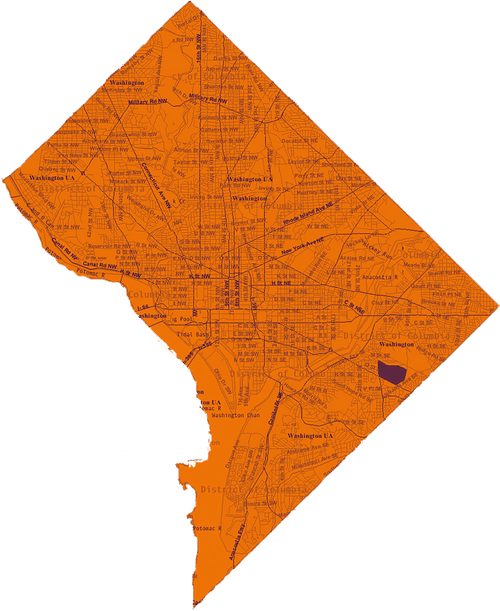
Urban neighborhood project - Community website
This phase of our work with the stakeholders started with a presentation to the PENAVEEDC community members about all the possible available options to build the website. After our presentation we convinced the clients (PennAveEastDC Committee) with the best option for the website –based on highlighting the merits and demerits of WIX Vs SquareSpace Vs a custom website. We decided to go with a custom website that was going to be maintained by the community volunteers with technology background.
URL: http://www.pennavedc.org
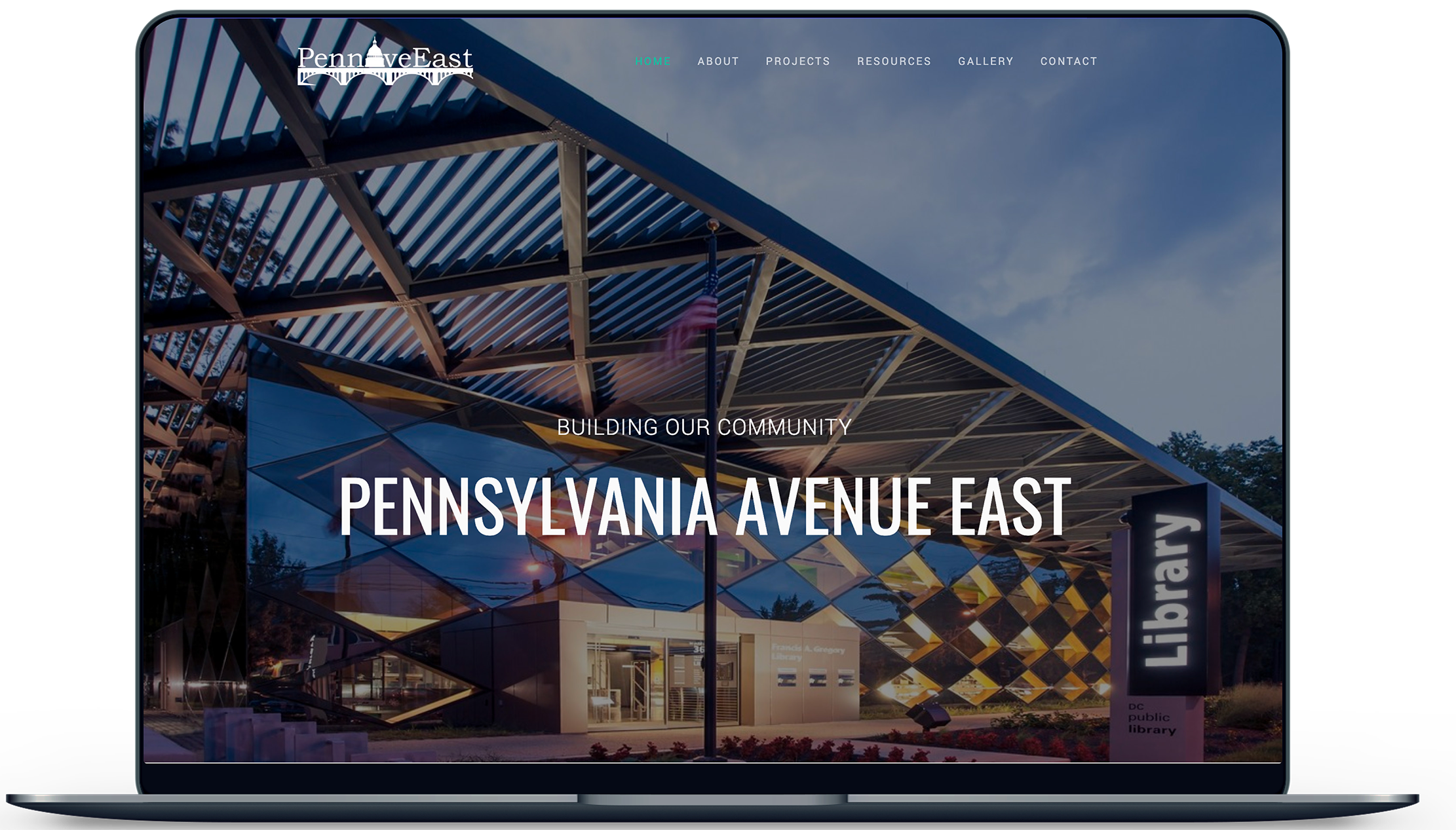
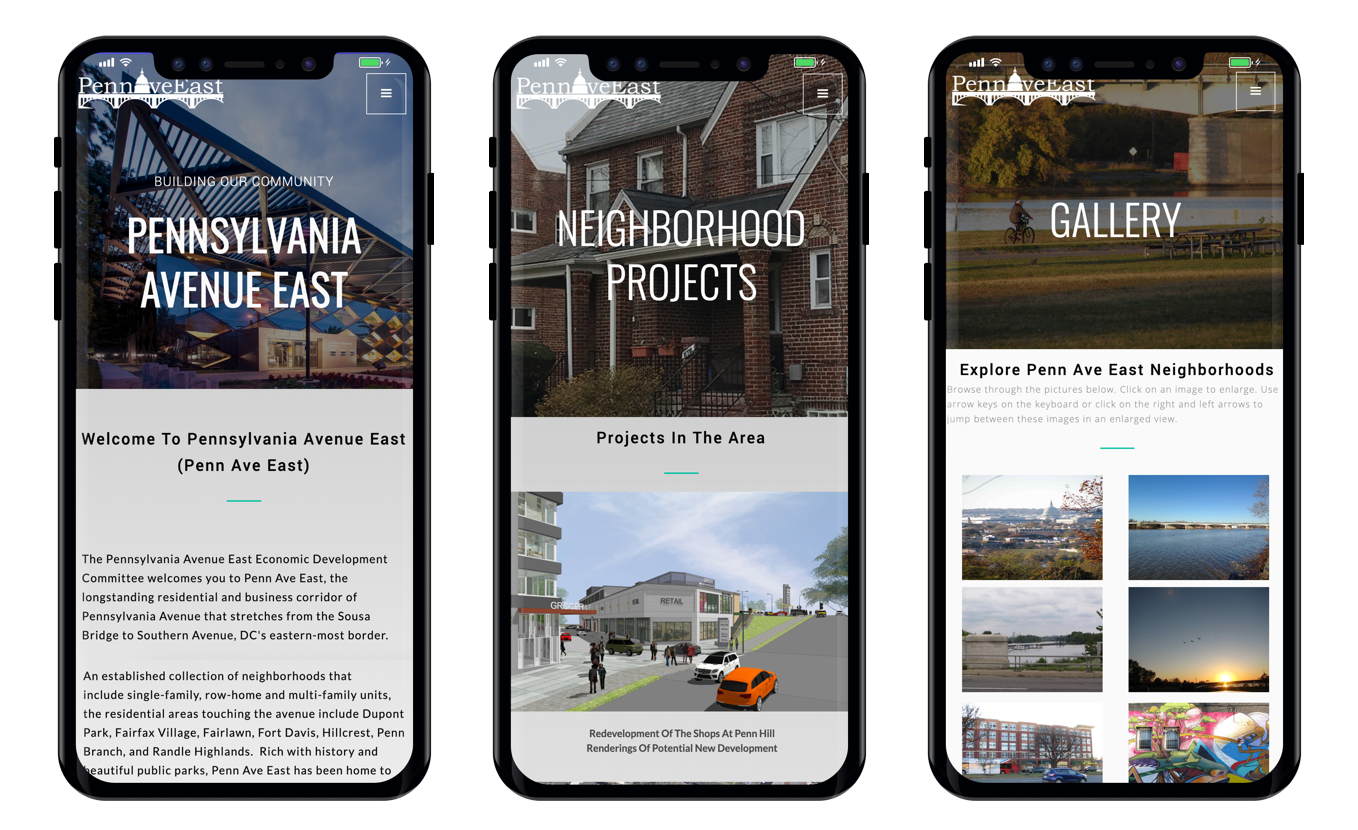
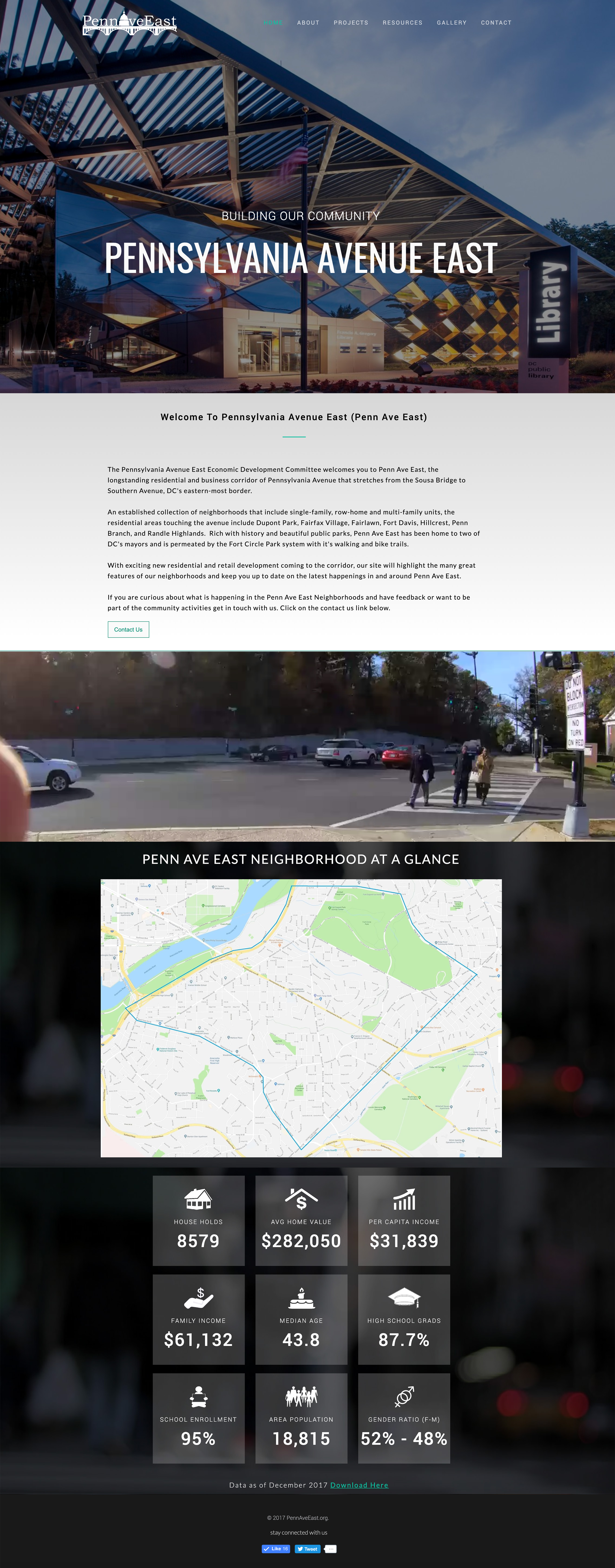
Urban neighborhood project - Branding
Our work involved creating a logo that resonated with the community. We created a few logos for their social media and website usage. They have adopted this logo across their cross channel campaigning and marketing.

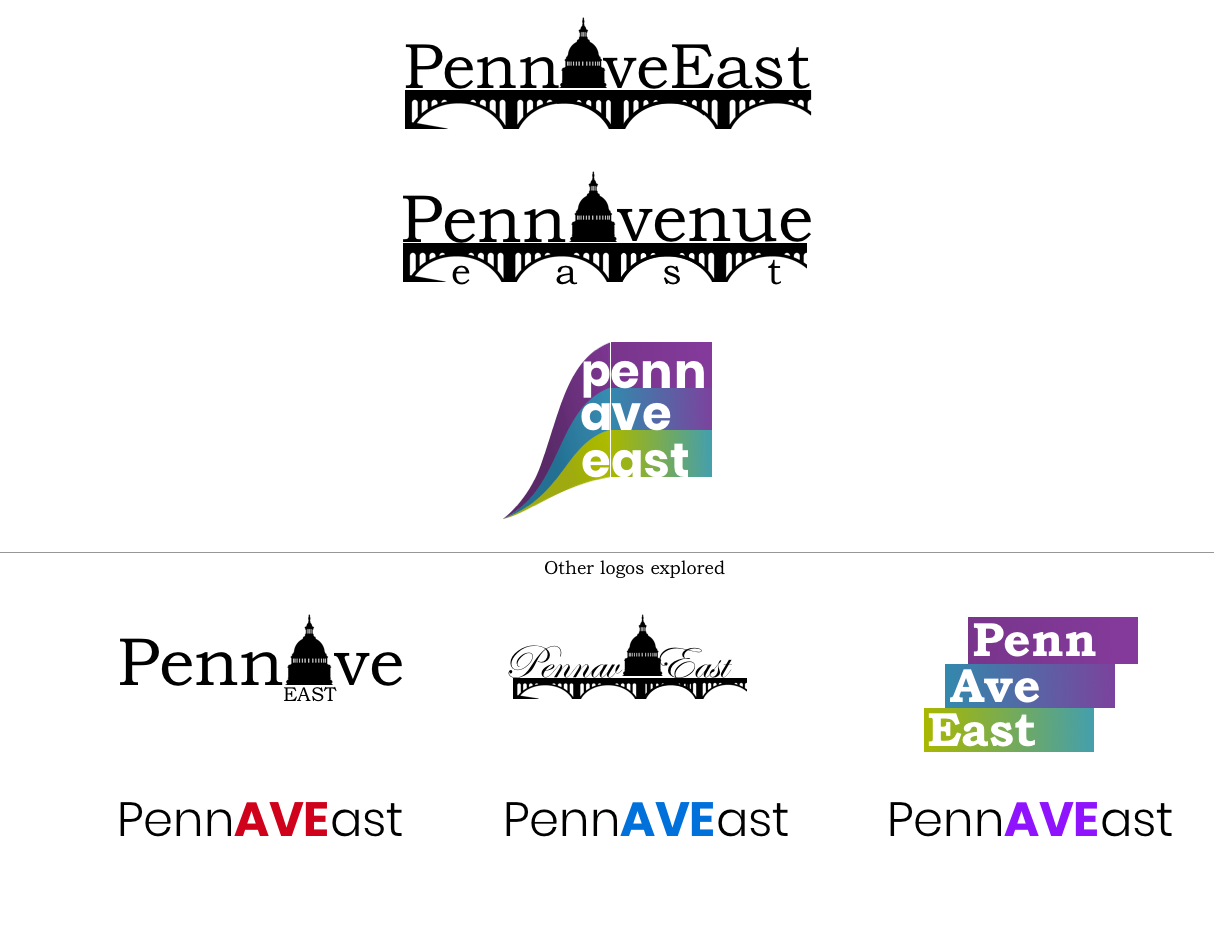
Promotional video
We created a promotional video with stories featuring many of the PennAveEastDC Committee members and other important area residents.
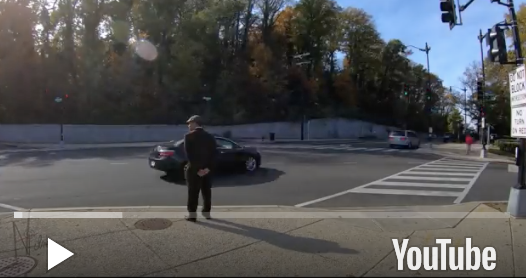
Social Media
We built social media platform Facebook and
Twitter account and optimized it with branding.
We also created a social media strategy document or the PennAveEastDC Committee to leverage on promoting their community on social media post CityLabs involvement.
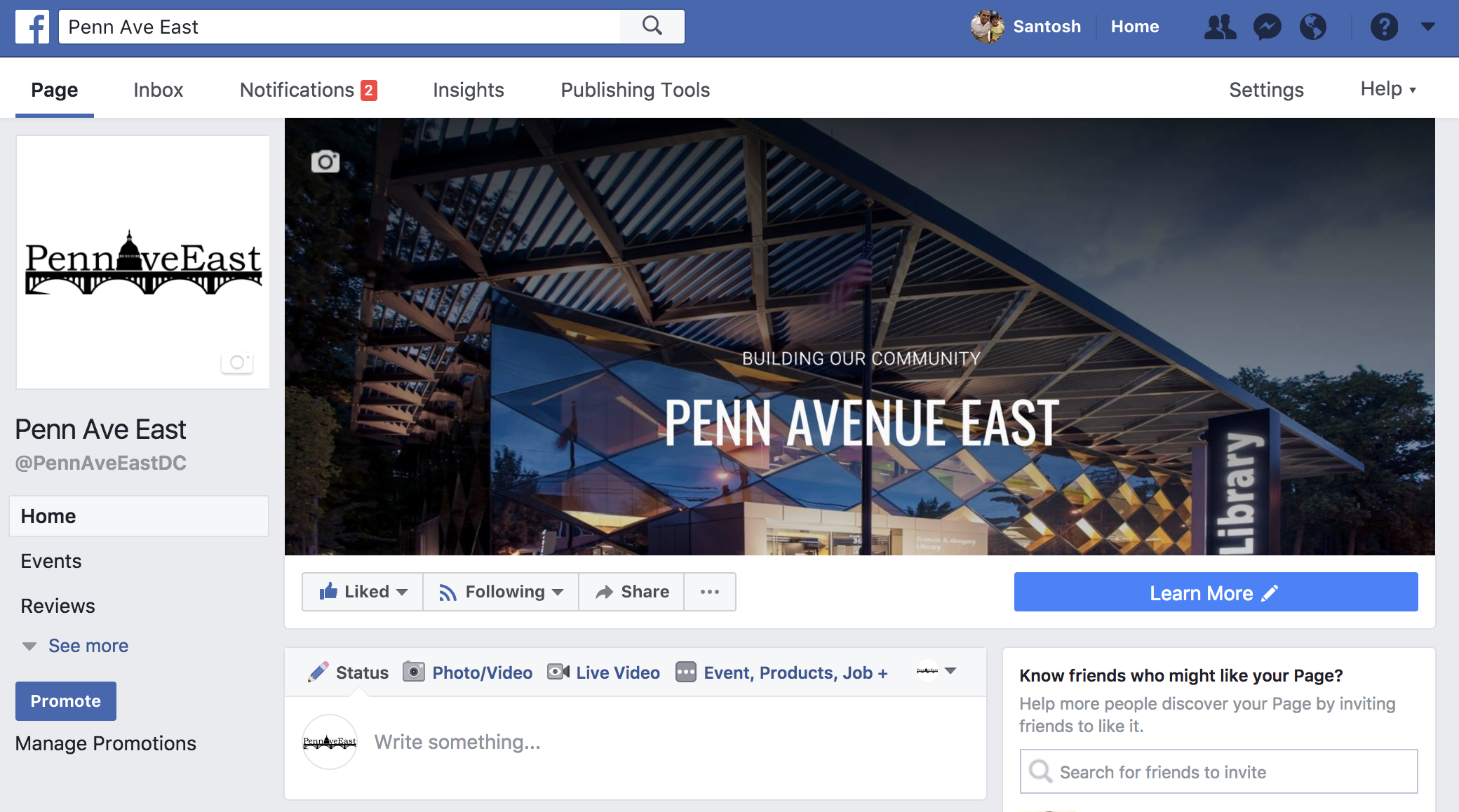
Digital pitch book
The pitch book is now digital and is part of the pennaveeast website. The pitch book is interactive and has deep links to area wide attractions and informative websites.
